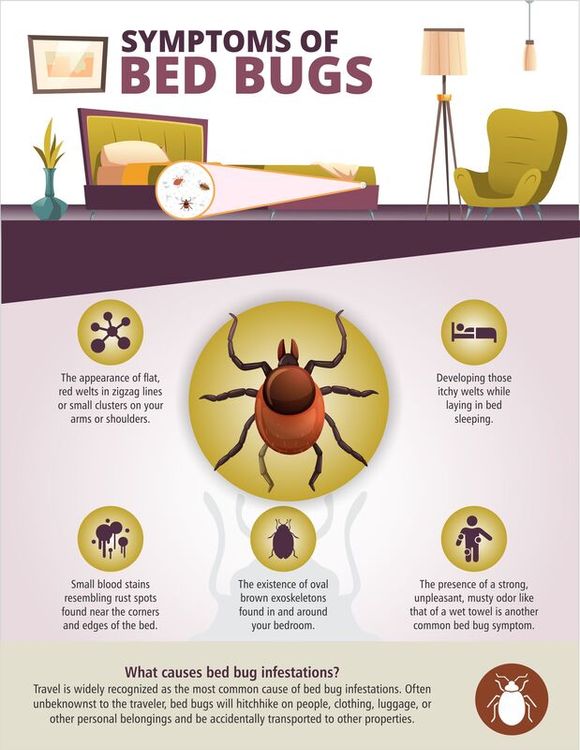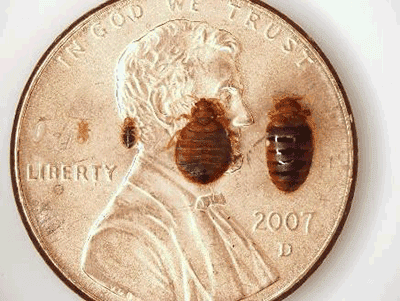Obtain Informed Concerning the Kinds Of Bug Control Techniques and Their Benefits for Homeowners
Comprehending the numerous pest control methods readily available to home owners is important for effective parasite management. Home owners who are knowledgeable can make calculated options that not only address pest issues but also improve the overall quality of their living environment.
Chemical Insect Control Techniques
Chemical parasite control approaches are a crucial element of incorporated insect monitoring approaches for home owners seeking effective solutions to pest infestations. These methods include the application of chemical compounds developed to remove or hinder parasites that intimidate personal effects, health and wellness, and convenience. Usual chemicals utilized include pesticides, fungicides, herbicides, and rodenticides, each tailored to target details insects.
The primary advantage of chemical parasite control is its fast performance; several solutions supply instant outcomes, minimizing pest populaces considerably in a brief time. Additionally, breakthroughs in chemical formulas have actually caused items that are more eco pleasant and have reduced poisoning degrees for non-target microorganisms when used correctly.

Organic Pest Control Techniques
Natural pest control approaches have actually obtained importance as house owners seek safer and more sustainable choices to typical chemical strategies. Biological insect control techniques utilize natural killers, parasites, or pathogens to take care of parasite populations effectively. This method is not only ecologically pleasant however also minimizes the danger of injury to non-target types, including advantageous pests and wildlife.
Among one of the most usual organic control approaches entails introducing natural predators into the environment. Ladybugs can be used to regulate aphid populations, while nematodes target soil-dwelling insects like grubs. Furthermore, parasitoids-- microorganisms that survive or within a host-- can be utilized to manage particular pest species by laying eggs inside them, ultimately bring about their demise.
Another strategy is the usage of biopesticides, which are stemmed from natural products such as microorganisms, minerals, or plants (bed bug exterminator). These items can successfully target bugs while posturing marginal risk to animals and human beings. Overall, organic parasite control strategies supply house owners with an efficient means of bug management that straightens with environmental concepts, promoting a healthier living atmosphere while reducing reliance on synthetic chemicals
Mechanical Bug Control Strategies
Mechanical pest control methods encompass a selection of approaches that literally protect against or get rid of pests without the usage of chemicals. These methods are specifically advantageous for house owners looking for eco-friendly options while ensuring the security of their space.
One usual approach is making use of barriers, such as nets, traps, and displays, which protect against insects from going into homes or particular locations. For example, mounting home window screens can properly maintain pests out, while utilizing physical barriers around yards can discourage larger parasites like deer or rabbits. Additionally, mechanical traps designed for rodents can capture and remove these insects without the need for toxic compounds.
Another reliable strategy involves making use of mops and vacuum cleaners to get rid of parasites straight from surface areas. Normal cleaning and maintenance can dramatically decrease insect populaces by removing food resources and hiding areas. Employing gadgets like ultrasonic bug repellents can hinder numerous bugs through audio waves that are undesirable to them yet faint to humans.
Social Bug Control Practices
Social insect control methods concentrate on customizing the environment and administration methods to produce problems that are less conducive to pest invasions. These practices are fundamental in keeping a balanced environment and minimizing the reliance on chemical treatments. By modifying agricultural methods, property owners can effectively deter insects while promoting plant health and wellness.
One usual technique consists of crop rotation, which interferes with the life cycles of pests by transforming the kinds of plants grown in a specific homeowner termite control location (bed bug exterminator). This not only lessens pest populaces yet likewise improves dirt health. Additionally, intercropping-- growing varied crops in closeness-- can puzzle bugs and decrease their capacity to find their favored host plants
Water monitoring is one more critical facet of cultural practices. Appropriate watering methods can avoid standing water, which acts as a breeding place for mosquitoes and various other pests. Preserving sanitation in and around the home, such as frequently getting rid of particles and food waste, can substantially minimize bug destination.
Integrating these social practices into a thorough pest management technique enables home owners to develop an atmosphere that naturally discourages insects, thus improving the efficiency of other control methods while advertising lasting gardening and landscape design.

Integrated Pest Monitoring Approaches
Integrated Insect Management (IPM) stands for an alternative method that integrates different approaches to successfully handle bug populations while reducing environmental impact. This methodology integrates biological, cultural, physical, and chemical methods to attain sustainable bug control. By analyzing pest populaces and their all-natural adversaries, IPM emphasizes surveillance and recognizing bugs before applying control steps.
Among the core concepts of IPM is making use of thresholds, which develop the degree of pest activity that requires intervention. This ensures that treatments are used just when required, minimizing the reliance on chemical pesticides. Biological control approaches, such as presenting all-natural predators or bloodsuckers, job in combination with social methods like plant rotation and habitat control to interfere with pest life cycles.
In addition, IPM motivates making use of least-toxic chemical choices when treatment is required, prioritizing products that present minimal threat to non-target microorganisms and the setting. For homeowners, adopting IPM approaches not only enhances the effectiveness of parasite monitoring however additionally promotes a healthier living setting, promoting biodiversity and decreasing chemical direct exposure. i was reading this Eventually, IPM equips property owners to make educated decisions that balance pest control with ecological duty.
Final Thought
Finally, comprehending the various bug control methods empowers property owners to make informed choices concerning pest management. Each strategy-- chemical, biological, mechanical, social, and integrated pest monitoring-- offers unique benefits that accommodate various demands and preferences. By choosing ideal techniques, house owners can efficiently manage parasite populations while minimizing health dangers and ecological impacts. This educated technique adds to a healthier living setting, advertising overall health for families and family pets alike.
Comprehending the various insect control techniques readily available to house owners is vital for effective parasite management.Chemical pest control approaches are an important part of incorporated bug management techniques for house owners looking for reliable remedies to pest infestations. Generally, biological parasite control methods give home owners with a reliable methods of insect administration that straightens with environmental principles, advertising a healthier living setting while decreasing dependence on synthetic chemicals.
Social pest control techniques concentrate on changing the environment and monitoring methods to develop problems that are less helpful to pest infestations.In conclusion, recognizing the numerous bug control approaches encourages property owners to make informed choices regarding pest view monitoring.